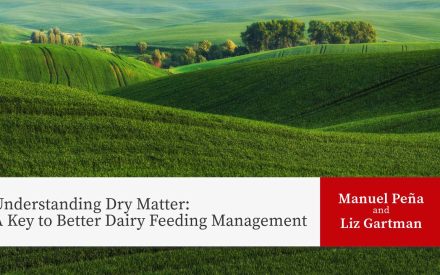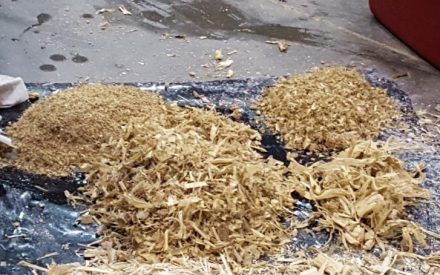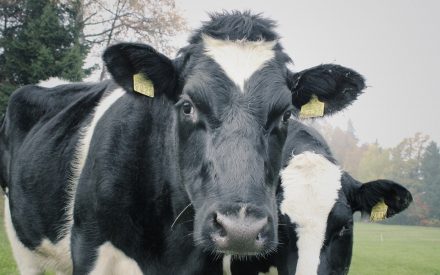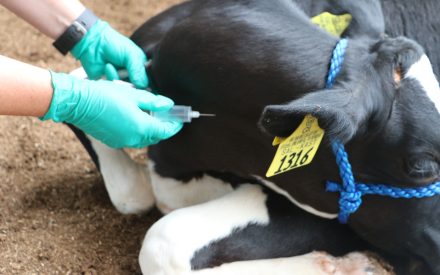Cocktail forage mixes have become popular due to their use after a cereal forage harvest, their good forage quality, and their ability to apply in-season manure. In general, cocktail forage mixes are a blend of annual grasses (warm and/or cool season) and legumes. The warm season grasses are usually sorghum-sudangrass, sudangrass, or millets, and cool season grasses are usually Italian ryegrass. Commonly used legumes are berseem, crimson, red clover, cowpeas, and hairy vetch. The Italian ryegrass and red clover have the potential to provide winter cover and subsequent spring harvest, which is an advantage of these mixes.
Two main types of cocktail forage mixes are being used:
- Warm/cool season mix: 60% BMR sorghum-sudangrass or pearl millet, plus 25% Italian ryegrass and 5% each from 3–4 legumes (usually berseem clover, red clover, and hairy vetch)
- Cool season mix: 70–75% Italian ryegrass plus 5% each from 3–4 legumes
Soil Conditions and Fertility
The warm/cool season mix works well in well-drained soils, while the cool season mix is a better choice in cool, poorly drained soils. The warm/cool season mix must be seeded when minimum soil temperature is 60°F to ensure fast growth, typically in late May to early June. The cool season mix can be seeded in early spring with some operations drilling into a growing cereal forage crop for an earlier first harvest.
Manure application can work with the mixes; however, sorghum-sudangrass can be damaged by equipment. The cool season mix will better tolerate manure application. Fertility recommendations should follow the grass needs to optimize yield and protein content with 40–50 lb nitrogen (N) per acre each harvest being typical. Split application of N is advised to improve N use. When N fertility is used, legume growth will be less due to competition, so a moderate N fertility (30 lb N/acre/harvest) may help maintain legume presence. If higher fertility is used, legumes may be omitted to reduce costs as they may not contribute to the stand.
Seeding Rate and Depth
Typical seeding rates range from 30–40 lb seed per acre with 50–75% from grasses and 25–50% from legumes. These can be seeded into a tilled seedbed or no-tilled into stubble from a cereal forage crop. Seeding depth is critical especially for the small-seeded ryegrass and legumes. Ideal planting depth of the warm/cool season grass mix would be one-half to three-quarter inch, while the cool season mix should be seeded at one-quarter to one-half inch. If planted too deep the smaller seeds will be slow to emerge and be less competitive.
Harvest Management
These mixes are managed in multiple harvest systems to provide high-quality forage. If the cool season mix is no-till drilled into the cereal forage—or as a separate crop—in early spring (mid- to late April), there is a high likelihood of four harvests; otherwise, if planted after a cereal forage, only three harvests are likely. The warm/cool season mix will only have three potential harvests since it needs to be planted in late May/early June. The first harvest usually occurs 45 days after planting with subsequent harvests every 30 days. Mixes with a warm season annual should be harvested at 30–36 inches tall for high forage quality. Delayed harvest will increase yield but decrease quality, and better fit the needs of dairy heifers or beef cows and growing cattle. With the warm/cool season mix, it has potential for harvest flexibility, such as allowing the first harvest of sorghum-sudangrass to mature longer for feeding heifers and using later harvests with greater ryegrass/legume content for feeding lactating cows.
Developed by UW–Madison Department of Animal & Dairy Sciences Assistant Scientist & Extension Dairy Specialist Matt Akins for the 2022 Badger Dairy Insight Webinar Series: Ins and Outs of Cocktail Forage Mixes for Dairy Rations, March 1, 2022.
Download Article

 Understanding Dry Matter: A Key to Better Dairy Feeding Management
Understanding Dry Matter: A Key to Better Dairy Feeding Management Check Your Corn Silage Processing During Harvest to Ensure Optimal Nutrition
Check Your Corn Silage Processing During Harvest to Ensure Optimal Nutrition ▶️ Watch: Impact of Bedding Choice on Udder Health of Freestall Herds
▶️ Watch: Impact of Bedding Choice on Udder Health of Freestall Herds Heifer Blueprint: Best practices for calf blood collection
Heifer Blueprint: Best practices for calf blood collection


